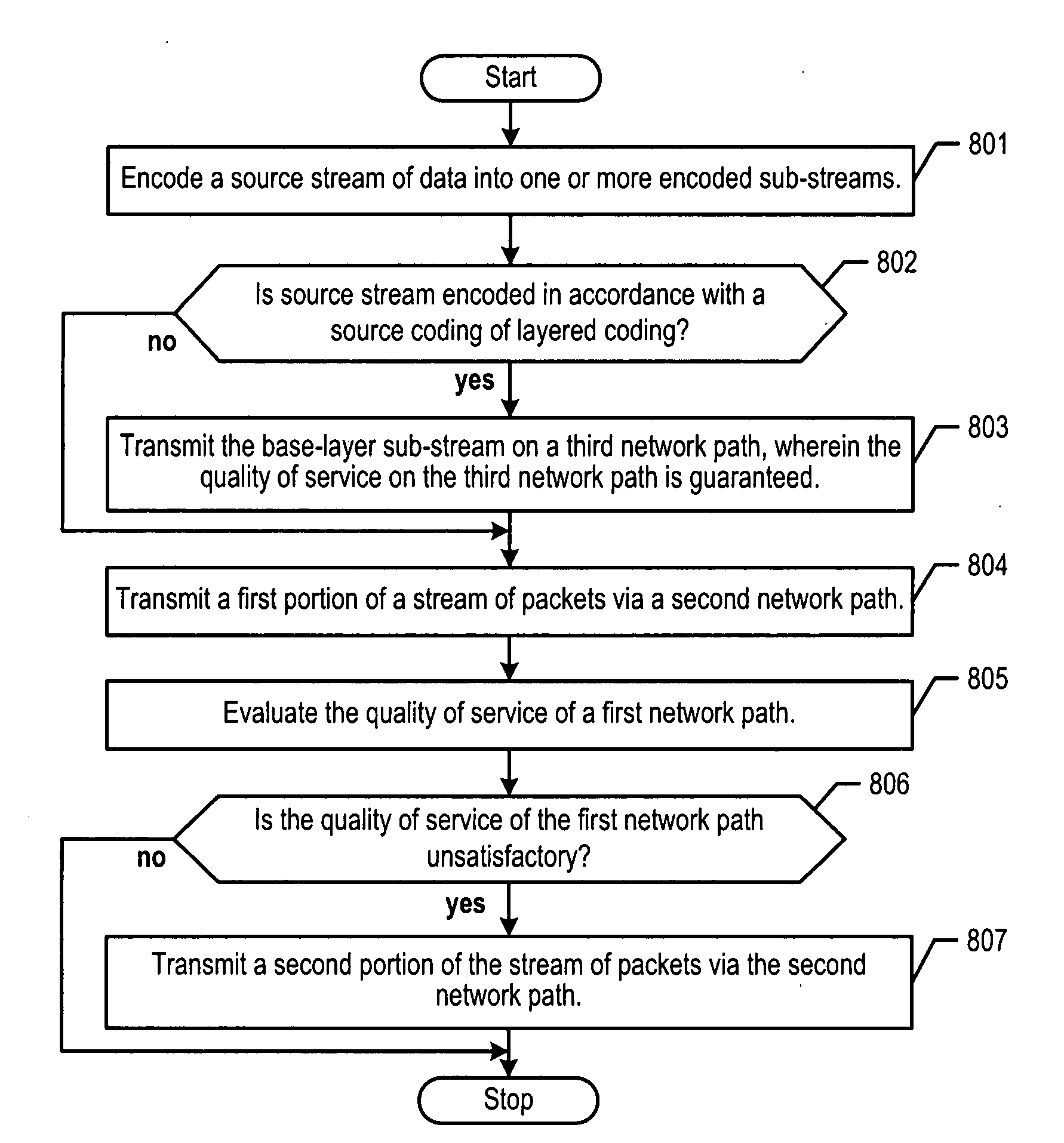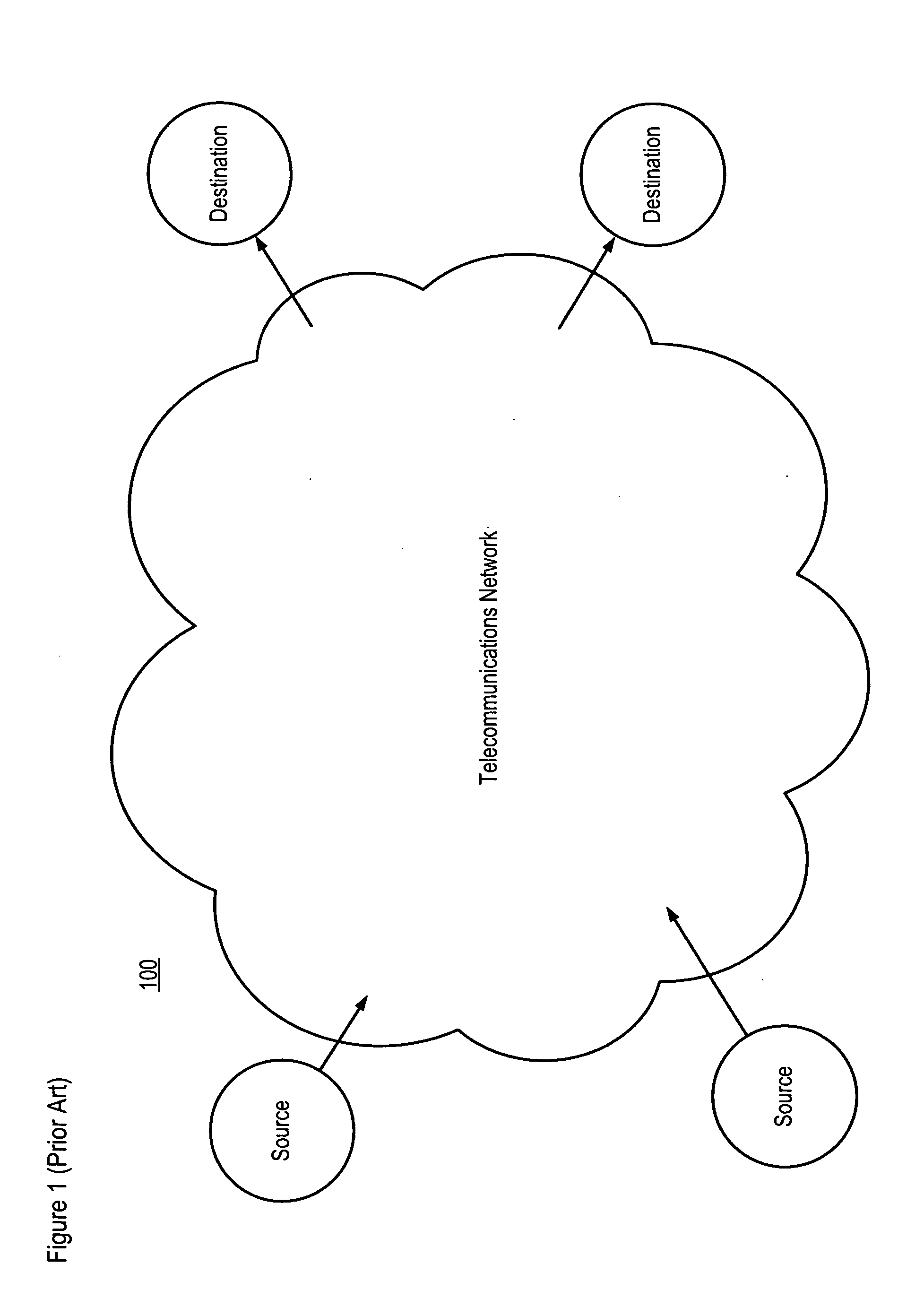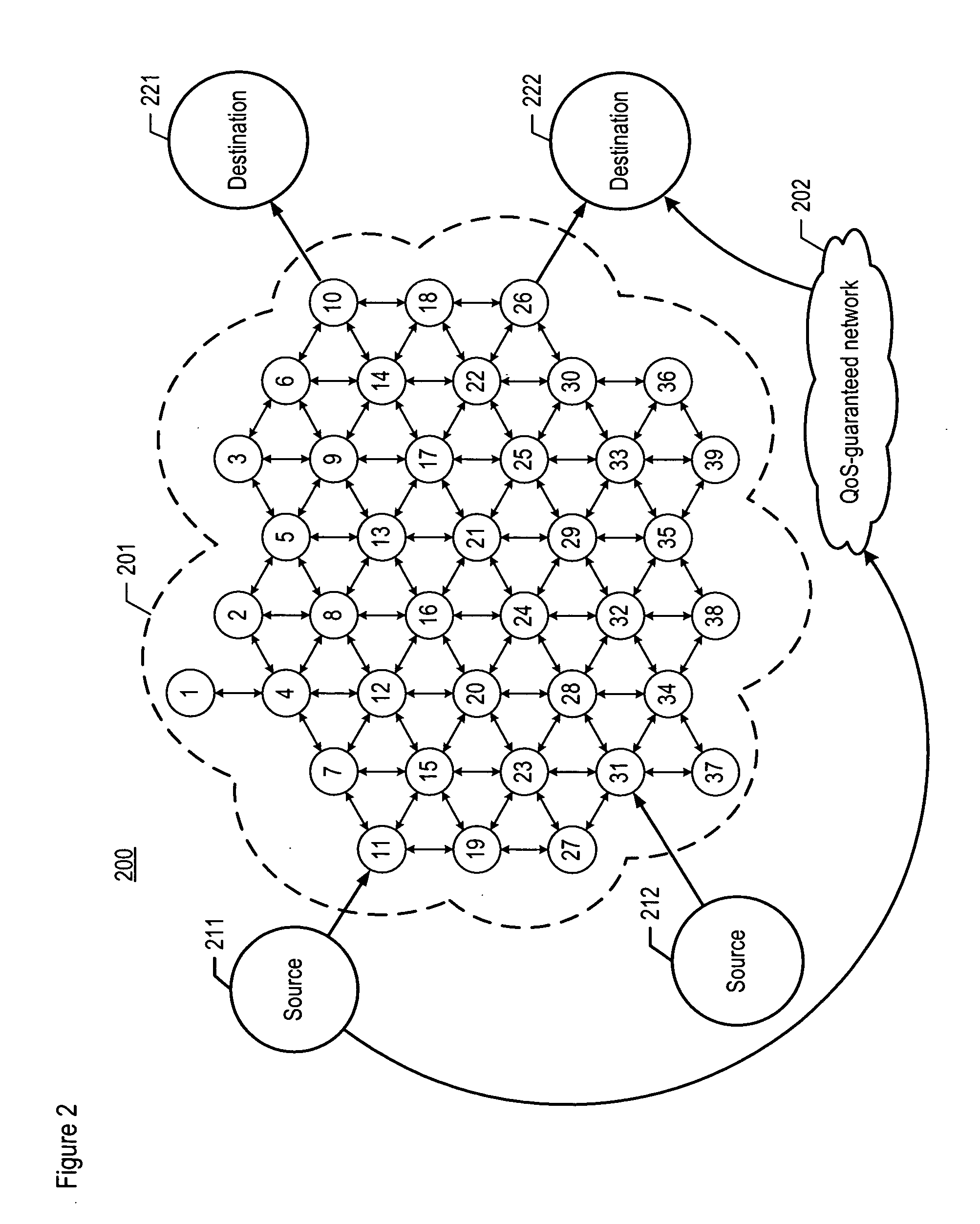Coding and packet distribution for alternative network paths in telecommunications networks
a technology of telecommunications network and packet distribution, applied in the field of telecommunications, can solve the problems of network path subject to various kinds of degradation in the quality of service, bit error rate measured per number, and inability to provide applications like telephony through the internet, so as to improve the overall quality of service, reduce or eliminate glitches
- Summary
- Abstract
- Description
- Claims
- Application Information
AI Technical Summary
Benefits of technology
Problems solved by technology
Method used
Image
Examples
Embodiment Construction
[0023] The following terms are defined for use in this Specification, including the appended claims: [0024] The term “source stream,” and its inflected forms, is defined as the unencoded, raw data stream of packets that is provided by an information source. [0025] The term “sub-stream,” and its inflected forms, is defined as the encoded data stream of packets that is the output of an encoder. [0026] The term “transmitted stream,” and its inflected forms, is defined as the data stream of packets that is transmitted by a source node.
[0027]FIG. 2 depicts a schematic diagram of the salient components of telecommunications system 200 in accordance with the illustrative embodiment of the present invention. System 200 comprises source nodes 211 and 212, destination nodes 221 and 222, and networks 201 and 202, interconnected as shown. FIG. 2 also depicts the physical resources that compose network 201.
[0028] Network 201 does not provide a quality-of-service guarantee to any packet or stre...
PUM
 Login to View More
Login to View More Abstract
Description
Claims
Application Information
 Login to View More
Login to View More - R&D
- Intellectual Property
- Life Sciences
- Materials
- Tech Scout
- Unparalleled Data Quality
- Higher Quality Content
- 60% Fewer Hallucinations
Browse by: Latest US Patents, China's latest patents, Technical Efficacy Thesaurus, Application Domain, Technology Topic, Popular Technical Reports.
© 2025 PatSnap. All rights reserved.Legal|Privacy policy|Modern Slavery Act Transparency Statement|Sitemap|About US| Contact US: help@patsnap.com



